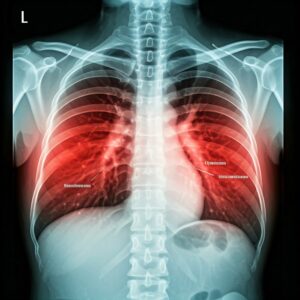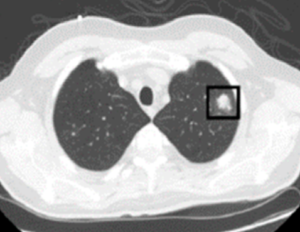
Anatomy and physiology form the foundation of contemporary medicine. Over the last several decades, advances in translational medicine have expanded our knowledge of the human body and diseases. Nevertheless, we still cannot claim a complete understanding of our bodies. Some questions have puzzled us for centuries, and despite cutting-edge technology and advancements in science, little progress has been made. Before becoming a board-certified physician, I conducted research in immunology. Years of training taught me that scientific research is the best way to explore the unknown world. However, I am also convinced that not everything can be explained solely through scientific evidence. This is mainly due to the limitations of observation and imperfections in methodology and research tools. The topic I wish to discuss here serves as a good example.
Our minds have a significant influence on how our bodies function. For instance, we all experience both good and bad days, even when nothing particular has happened, and our bodies tend to be less efficient on bad days. By altering certain perspectives or behaviors, we can expect to change how we think and act. This is the underlying theory of cognitive-behavioral therapy (CBT). Indeed, it has been proven that CBT is an effective tool for assisting individuals with psychological problems.
Cognitive therapy is not confined to addressing mental disorders; it can also enhance the functional well-being of individuals with other organic diseases. A recent peer-reviewed article reported on a randomized controlled trial investigating how cognitive therapy can alleviate symptoms in patients with sarcoidosis. Sarcoidosis is an inflammatory disease that affects multiple organs, including the lungs, brain, and eyes, resulting in various symptoms, with fatigue being the most common. In this study, participants were instructed to engage in cognitive therapy, which included meditation and slow breathing techniques, whenever they experienced fatigue. Researchers recorded the severity of their fatigue and other mental disorders, such as anxiety and depression. After a 12-week therapy period, the researchers found that cognitive therapy had significantly reduced the severity of fatigue in this group of patients. Additionally, participants experienced much less anxiety and depression. This outcome is quite impressive and clearly demonstrates the influence of our minds in improving subjective symptoms. However, it’s worth noting that this study did not investigate whether this approach also improves respiratory symptoms in this population, even though sarcoidosis affects the lungs in more than 90% of cases.
In my clinic, the majority of my patients have chronic obstructive pulmonary disease (COPD), which is a common respiratory disease related to smoking. When COPD becomes severe, these patients experience shortness of breath even after walking a short distance at home. They live in constant fear that their breathing may become difficult at any moment. As you can imagine, this kind of pressure and fear makes them anxious and exacerbates their breathing difficulties. As part of the action plan, I advise them to be mindful of how they breathe when their breathing becomes heavy. I instruct them to use the correct breathing techniques to prevent their breathing difficulties from spiraling out of control.
Is it beneficial to intentionally control our breathing? Before addressing this question, you may wonder whether it is practical to do so. Regardless of the signals the respiratory center sends out, our body relies on respiratory muscles to initiate or terminate respiratory activities. Since we can consciously control some of these respiratory muscles, it is possible to alter our breathing pattern and even override commands from the respiratory center. However, there are limits. For instance, it is safe to hold our breath for 1-2 minutes, but we cannot suffocate ourselves by simply holding our breath, because the respiratory center takes over when our life is in danger. As long as we stay within this limit, everyone can control the way they breathe. Under normal circumstances, when your respiratory system functions perfectly, and your mind is clear, intentionally manipulating your breathing may not be beneficial. The control system in your body is capable of monitoring and managing your respiratory activities effectively, responding appropriately. However, under abnormal conditions such as anxiety, COPD, lung fibrosis, and others, deliberately controlling respiratory muscles and adjusting the rhythm and effort of breathing can improve the quality of breathing and help you breathe better. I refer to this as ‘breathing reset.’ More on this topic will be discussed in a separate post.
In fact, the manipulation of breathing is not a new concept and has been practiced for centuries. Ujjayi in Yoga is a fundamental component of Pranayama and is commonly referred to as ‘ocean breath’ due to the sound it produces. To perform Ujjayi, individuals inhale deeply through their nose, filling their lungs, and then exhale slowly and audibly through slightly constricted throat muscles. Many practitioners believe that Ujjayi breathing helps elevate one’s spirit and enhances concentration.
Similarly, Zen meditation, known as Zazen, is a central practice among Zen Buddhists. It involves sitting in a specific posture, such as the ‘padmasana’ or lotus position, which requires crossing the legs with each foot resting on the opposite thigh. Zen meditation often emphasizes slow and deep breathing. The breath is typically counted or synchronized with specific movements, such as inhaling on the rise and exhaling on the fall of the abdomen. Studies have shown that peaceful breathing during meditation helps relieve stress, prevent anxiety, and reduce the risk of depression and panic attacks.
In summary, breathing is not a simple mechanical activity. It represents the harmony between your body and the surrounding environment. It is a dynamic process that requires constant intentional and unintentional fine-tuning. Whenever respiratory activities cannot meet the body’s needs, suffering begins. Especially during the COVID-19 pandemic, which has disrupted our lives, many people continue to suffer from COVID complications, including long-COVID and dyspnea on exertion, a sophisticated way of describing ‘difficulty breathing during physical activities.’ I firmly believe that learning how to reset our own breathing can be tremendously helpful, ultimately improving our quality of life.



